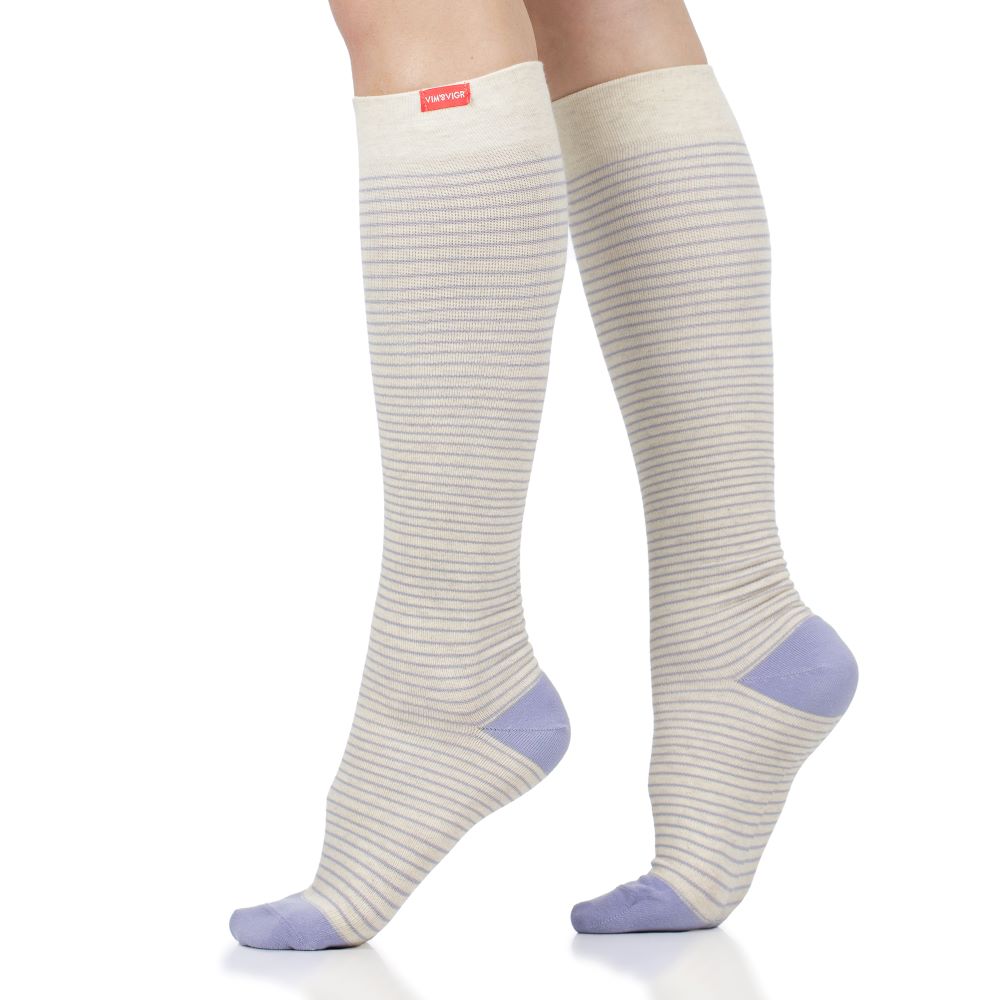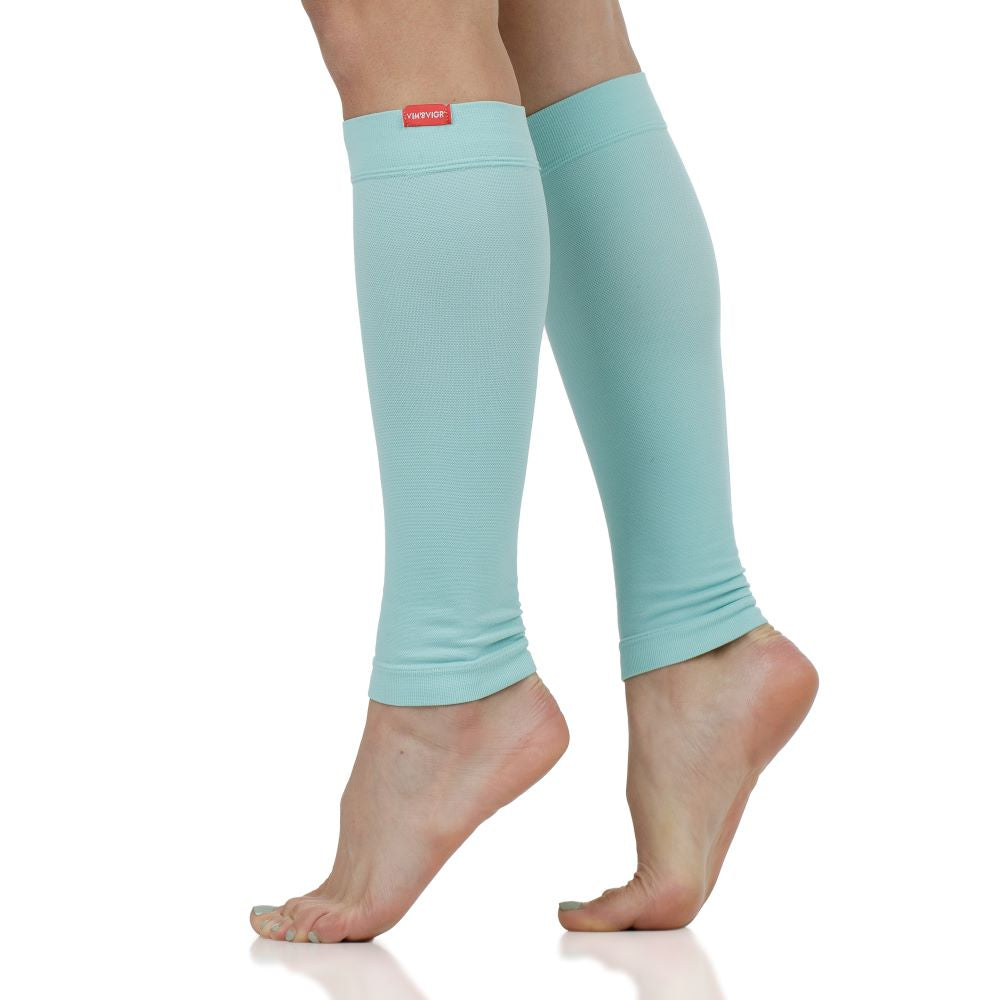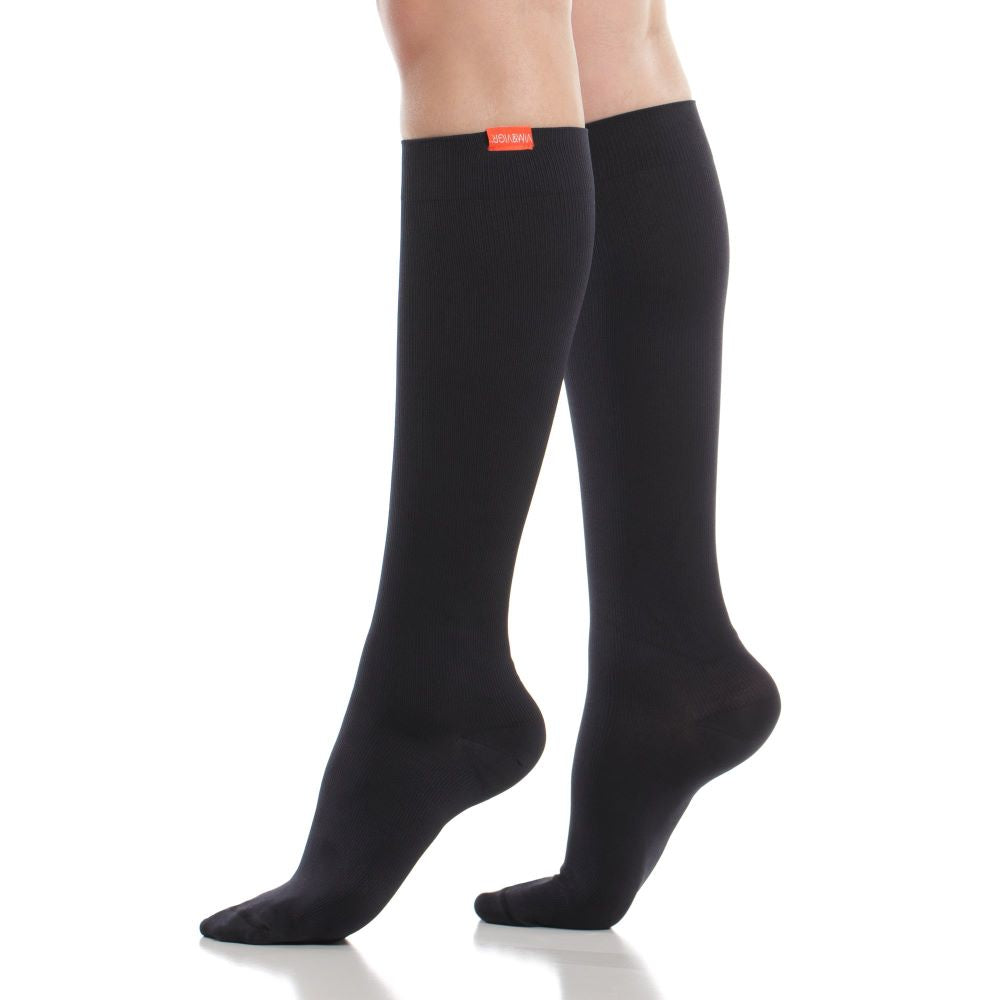Can Compression Stockings Dislodge a Clot?
Deep vein thrombosis (DVT) causes many people to suffer from blood clots forming in veins deep inside the body, like in the lower limbs. It is common for the legs to be the most affected, which could make you wonder, “Can compression stockings cause problems by dislodge a clot?”
In short, compression socks are used as a treatment method to prevent blood clots and are not likely to dislodge blood clots. It is important to know that you should not use extremely high pressure, it may cause problems. If you are not sure about how much pressure you need to use or if you believe you have a blood clot, seek the help of a healthcare professional.
What are the potential benefits of compression stockings to those suffering from DVT? Can compression socks help with blood clots and relieve their symptoms? Thanks to how compression socks support blood circulation and help reduce swelling and pain, they can be excellent tools to prevent DVT and help against blood clots, according to one scientific study. If you are worried about blood clots or have further questions, please consult your healthcare provider.
In this article, we will cover:
- Whether compression stockings can dislodge a blood clot
- The role of compression socks and stockings against DVT
- How to wear compression socks for DVT
- How to lower your risk of DVT by wearing compression garments
- Choosing the best compression socks for your deep vein thrombosis
Can Compression Stockings Dislodge a Blood Clot?
Ultimately, deep vein thrombosis (DVT) happens when blood forms a clot in the deep veins of your body, according to the Mayo Clinic. Blood clots are clusters of blood cells and other sticky substances that build up in your blood vessels. Blood clots are created to stop bleeding after an injury. While blood clots can stop bleeding, they can potentially cause a life-threatening situation, depending on where the blood clots occur. When blood clots build up in your deep veins, serious problems can develop like DVT and even pulmonary embolism.
If you develop DVT, you can experience uncomfortable feelings. You may experience pain, tenderness, and swelling, along with the skin feeling warm to the touch. It is also possible that you do not notice any symptoms at all. While anyone could develop DVT, development is more common after a surgery or physical trauma. Deep vein thrombosis can cause dangerous situations because a dislodged blood clot can travel to your lungs, causing a pulmonary embolism by blocking an artery. John Hopkins Medicine reports that pulmonary embolisms can lead to severe complications like memory loss and even death.
If you notice DVT symptoms, seek immediate medical attention. The benefit of compression stockings once a DVT has already developed is that they may prevent post-thrombotic syndrome, a condition that can cause chronic pain, swelling, edema, or skin changes. Compression stockings are mainly used to prevent other clots from forming thanks to the way they stimulate blood flow, but they may have benefits after DVT occurs, according to a scientific review. Be sure to consult your healthcare provider before trying compression stockings or socks.
How Do Compression Stockings Help with DVT?
Using compression stockings when you suffer from deep vein thrombosis may be extremely beneficial according to some scientific studies and as we’ve heard firsthand from our brand ambassador, Jessica Gosdeck. Moreover, several studies have found a strong link between wearing compression stockings and preventing DVT in hospitalized patients.
Patients wearing compression stockings after surgery were found by a scientific review to be less likely to develop deep vein thrombosis, but they’re not the only ones who can benefit from them. After all, it’s not just through surgery or trauma that you could develop DVT in the first place. Blood clots sometimes develop in the legs of people who go on flights for longer than four hours, because of prolonged sitting in a confined space. As such, a scientific study has shown that stockings can prevent DVT in these scenarios, too.
The key functionality of compression socks is the pressure applied to the lower limbs. The compression socks support healthy blood flow, to reduce the likelihood of clots forming, while protecting vulnerable patients from any other issues such as edema.
Interested in compression socks? Check out our collection of stylish compression socks here!
How to Wear Compression Socks for DVT
Patients who struggle with blood clots or DVT are advised to ask their healthcare provider about wearing compression socks to stimulate their blood flow. By creating pressure in the lower leg, these socks reduce the likelihood of the blood pooling and creating blood clots in the vein or other blood vessels.
It’s important to note that compression socks and TED hose are different types of garments, but both are often used by patients that can develop DVT. When you are bedridden or moving very little, your doctor could prescribe TED hose, which puts less pressure on your limbs (around 8-18 mm Hg). When you are on your feet and stand for long periods of time, however, blood can pool around your ankles and develop clots, and you may need more pressure to move blood around and keep it flowing well.
In this second scenario, compression socks or stockings may be more appropriate, and they can be the most comfortable items to wear to combat DVT. They come in various levels of pressure, ranging from 15-20 mmHg to 40-50 mmHg. You can buy compression stockings without a prescription from a doctor, or you can get specific ones as recommended by your doctor.
You can wear compression socks to prevent DVT when you know you’re going to be an at-risk case: when you go on long flights, stand for long periods of time, or when you’re recovering from surgery and/or trauma. Always seek the opinion of a healthcare professional if you are at risk of any blood or heart disorders.
How to Lower Your Risk of DVT with Compression Socks
To effectively lower your risk of DVT by wearing compression socks, here are some handy tips on picking the best ones for you:
-
Ensure you know what pressure of compression socks you need – the pressure intensity can vary greatly between medical-level and those worn more casually.
● Make sure your socks fit well – you need to have the right size to get the benefit of the pressure, otherwise loose-fitting socks will not help reduce the risk of DVT.
● Try different materials and adapt them to your activity – while compression socks can be worn as casual, stylish items, they can also double up as functional socks for running or hiking, depending on the material used. For example, merino wool compression socks are ideal for hiking trips, thanks to their moisture wicking and temperature regulating properties, as well as to their compression action.
● Learn how to wear compression socks correctly to ensure they are as comfortable and as effective as possible. - Don’t be afraid to try several sizes and styles to find your favorite combinations.
How to Choose the Best Compression Socks for DVT
Whether you’re recovering from surgery or trauma, blood clots can form easily in the lower limbs after periods of inactivity or if the blood simply pools around your ankles or somewhere in the veins. The condition of deep vein thrombosis plagues many patients, and it can develop into a dangerous, life-threatening problem.
However, compression stocking and socks can provide a good way to prevent DVT and may help prevent problems if DVT has developed, according to some scientific studies. Through the pressure they apply onto the lower legs, they stimulate normal blood circulation and help reduce swelling, pain, itchiness, or heat at skin level, etc. Compression socks can be medically prescribed, but you can safely start off with lower pressure levels and work your way up, as needed.
Choosing the best compression socks doesn’t need to be difficult: we have a wide range of options, from the lowest to medical grade pressure levels, and in a variety of designs to suit your lifestyle and fashion interests. Moreover, by combining the beneficial effects of compression socks with other features like moisture wicking and temperature regulation, our nylon or merino wool socks can be your ideal companion for hikes, long walks, or runs. Remember to ensure they fit well and to ease yourself in – start by wearing them for a few hours at a time, and slowly increase to the desired pressure until your legs are fully used to the compression!
References
Sachdeva, A., Dalton, M., & Lees, T. (2018). Graduated compression stockings for prevention of deep vein thrombosis. The Cochrane database of systematic reviews, 11(11), CD001484. Read it here.
Johns Hopkins Medicine. (2019). Pulmonary Embolism. Johns Hopkins Medicine. Read it here.
Burgstaller, J. M., Steurer, J., Held, U., & Amann-Vesti, B. (2016). Efficacy of compression stockings in preventing post-thrombotic syndrome in patients with deep venous thrombosis: a systematic review and metaanalysis. VASA. Zeitschrift fur Gefasskrankheiten, 45(2), 141–147. Read it here.
Hsieh, H. F., & Lee, F. P. (2005). Graduated compression stockings as prophylaxis for flight-related venous thrombosis: systematic literature review. Journal of advanced nursing, 51(1), 83–98. Read it here.





















I am glad that you have updated your article since I messaged you all on Facebook about the original wording and how it could have been dangerous. I would still suggest that people who have a CONFIRMED DVT check with their doctor before using any compression stocking as my doctor specifically told me DO NOT wear compression stockings during my DVT due to the risk of it dislodging and causing a PE. Your article even mentions the pressure the stocking creates moving fluid up the leg which is what can cause the clot to dislodge and why they say don’t wear them with a confirmed DVT. It is good for prevention and after you are recovering from the DVT. I hope your medical reviewer and writer will word this better for your readers in the future as this can be a life threatening situation.
Hi Armando – Thank you for reaching out. Compression stockings and socks can help dislodge blood clots when they have formed. However, compression socks can also be medically prescribed so we would highly recommend consulting first your doctor before purchasing these kinds of products.
They can also create enough pressure to “hopefully dislodge a clot when it forms.” Won’t this be life threatening if it dislodges an existing clot and goes to the lung?
Great information! Very enlightening!Thank you.
Leave a comment